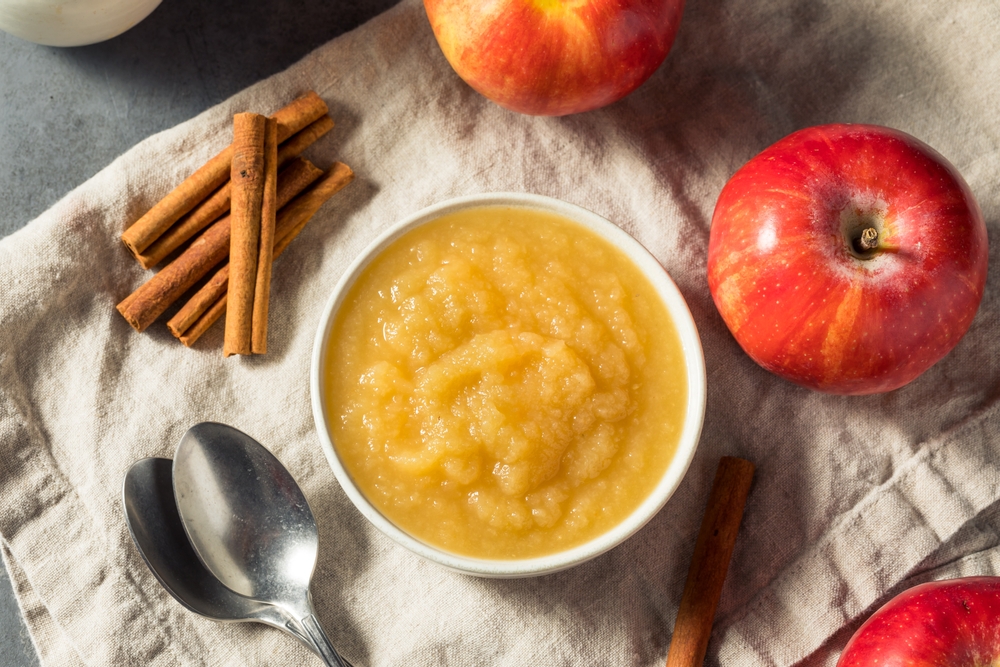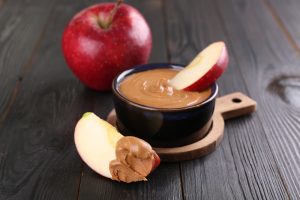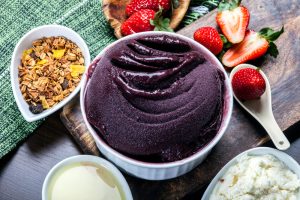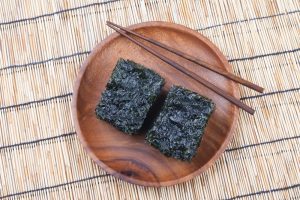Applesauce can support your weight loss goals, but only if you choose unsweetened varieties and control your portions – otherwise, you might actually sabotage your progress with hidden sugars and excess calories.
While it's not as effective as eating whole apples, unsweetened applesauce offers genuine benefits like low calories (just 90 per cup) and appetite-suppressing fiber that can help you feel full longer.
Keep reading to discover the science-backed benefits, critical limitations you need to avoid, and exactly how to use applesauce strategically for weight loss success.
The Weight Loss Verdict: When Applesauce Actually Works
Applesauce sits in weight loss limbo—it can genuinely help you shed pounds, but only under specific conditions that most people get wrong.
The difference between success and failure comes down to two critical factors: the type you choose and how much you eat.
Your success hinges on these non-negotiables:
- Selecting truly unsweetened varieties (not “no sugar added” which can still contain natural concentrates)
- Understanding that applesauce delivers less satiety than whole fruit
- Recognizing portion creep as your biggest threat
Think of applesauce as a supporting player in your weight loss strategy, not the star.
When you use it strategically—as a low-calorie cooking substitute or pre-meal appetite suppressant—it can meaningfully contribute to your calorie deficit.
However, treating it like a miracle food will leave you disappointed and potentially heavier.
The effectiveness varies dramatically based on implementation.
Swap it for oil in baking recipes, and you'll slash hundreds of calories per serving.
Mindlessly snack on sweetened varieties throughout the day, and you'll undermine your entire diet.
Most people fall somewhere between these extremes, which explains why applesauce gets mixed reviews in weight loss circles.
Your approach determines whether applesauce becomes a valuable tool or another dietary dead end.
Three Science-Backed Weight Loss Benefits of Applesauce
Remarkably Low Calorie Density
At just 90 calories per cup, unsweetened applesauce delivers substantial volume without derailing your calorie budget.
This naturally fat-free food provides satisfying bulk that helps fill your stomach while keeping calories minimal—a critical advantage when you're trying to maintain a deficit for weight loss.
The calorie efficiency becomes even more impressive when you consider portion satisfaction.
You can enjoy a full cup of applesauce for fewer calories than a single tablespoon of most cooking oils, making it an excellent choice for volume eaters who struggle with traditional portion restrictions.
Massive Calorie Savings in Cooking
The substitution power of applesauce transforms high-calorie recipes into weight-loss-friendly alternatives.
When you replace oil with applesauce in baking, the numbers are staggering:
- Applesauce: 25 calories per cup
- Canola oil (half cup): 964 calories
This single swap can eliminate nearly 940 calories from recipes without sacrificing moisture or texture.
For someone baking regularly, these substitutions can create significant weekly calorie deficits that accelerate weight loss progress.
Dual-Action Appetite Control
Applesauce delivers appetite suppression through two distinct mechanisms that work together to reduce overall food intake.
The fiber component provides immediate satiety benefits.
With 4 grams of fiber per cup, applesauce helps you feel full longer and reduces the likelihood of overeating at subsequent meals.
This fiber also slows digestion, creating more stable blood sugar levels that prevent energy crashes and food cravings.
The pectin content offers even more sophisticated appetite control.
Research shows pectin suppresses weight gain and fat accumulation through dose-dependent effects.
When pectin combines with water in your stomach, it forms a gel-like substance that physically increases fullness signals to your brain, naturally limiting your food intake for hours after consumption.
These 23 grams of carbohydrates per cup provide sustained energy without the calorie density of processed snacks, supporting your energy levels while maintaining your caloric deficit.
What Research Actually Shows About Applesauce and Weight Control
Immediate Appetite Suppression Effects
Controlled studies reveal that apple consumption creates measurable reductions in subsequent food intake.
Participants who ate whole apples before lunch consumed 15% fewer calories during their meal compared to control groups—a significant decrease that translates to meaningful weight loss over time.
The active compound driving this effect is pectin, which demonstrates remarkable potency even in small doses.
Research shows that consuming just 5 grams of pectin increases satiety for up to 4 hours, creating a sustained appetite-suppressing effect that extends well beyond the initial eating experience.
Metabolic and Microbiome Benefits
Apple-derived pectin works beyond simple appetite control to create favorable conditions for weight management at the cellular level.
Studies demonstrate that pectin modulates gut microbiota composition, promoting beneficial bacteria that support healthy metabolism and reduce systemic inflammation.
This metabolic optimization has direct weight control implications.
Research conducted under high-fat diet conditions shows that pectin supplementation actively suppresses both weight gain and fat accumulation, suggesting protective effects even when overall diet quality is compromised.
Real-World Weight Loss Comparisons
Perhaps most compelling for practical application, longitudinal studies comparing different snacking habits reveal clear weight loss advantages for apple and pear consumers.
Individuals who ate these fruits daily lost significantly more weight than participants consuming equivalent calories from processed snacks, even when total caloric intake remained constant between groups.
The research consistently confirms pectin's dual mechanisms:
- Direct intake limitation through physical satiety enhancement
- Metabolic support via improved gut health and reduced inflammation
This body of evidence establishes a clear scientific foundation for using apple products, including applesauce, as weight management tools.
However, the studies primarily focused on whole fruits, suggesting that while applesauce retains beneficial pectin, the processing may reduce some of these research-backed advantages.
The takeaway for applesauce consumers: you're getting scientifically validated weight control benefits, though potentially in a somewhat diluted form compared to whole fruit consumption.
Critical Limitations That Sabotage Weight Loss Success
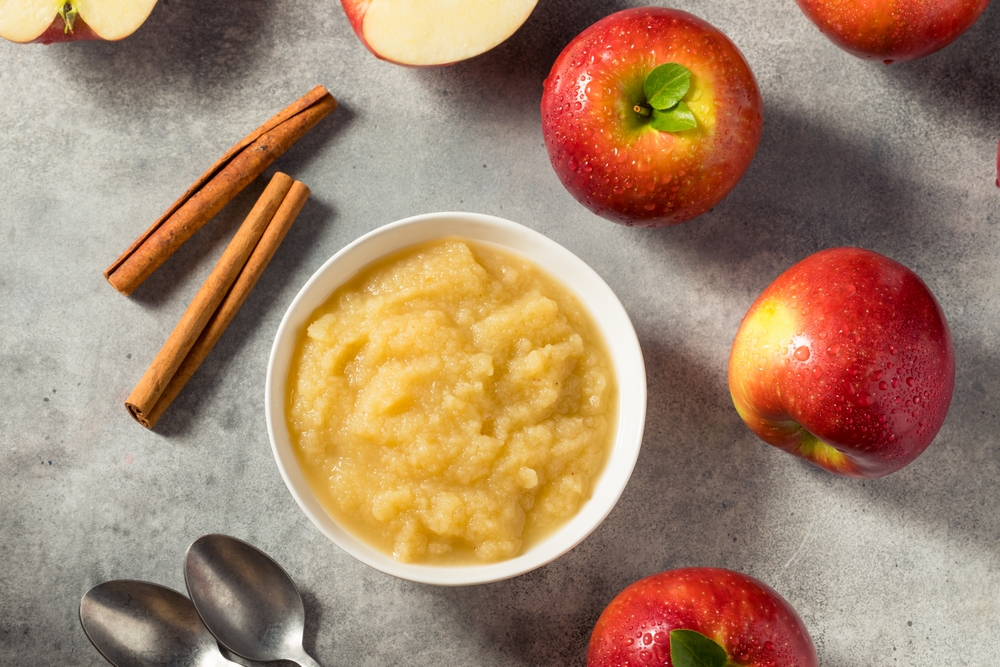
The Processing Penalty: Lost Fiber and Nutrients
Processing apples into sauce strips away their most weight-loss-friendly components.
The numbers tell a stark story: whole apples contain 2.4 grams of fiber per 100 grams, while applesauce delivers only 1.1 grams—118% less fiber in the processed version.
This fiber loss occurs primarily through skin removal, which eliminates not just the majority of fiber content but also concentrated antioxidants and phytonutrients that support metabolism.
The skin contains the densest concentration of beneficial compounds, making its absence a significant nutritional downgrade.
Compromised Satiety Response
Research consistently demonstrates that adults report feeling substantially less full after consuming applesauce compared to whole apples, even when consuming equivalent amounts of fruit.
This reduced satiety creates a dangerous cycle where you need larger portions to achieve satisfaction, potentially negating the calorie benefits that make applesauce attractive for weight loss.
The texture difference plays a crucial role in this satiety gap.
Whole apples require chewing, which triggers satiety signals and slows consumption speed.
Applesauce bypasses these natural appetite control mechanisms, allowing you to consume more calories before your brain registers fullness.
The Added Sugar Trap
Commercial applesauce brands present a hidden calorie landmine that can completely derail weight loss efforts.
Many popular varieties contain up to 15 grams of added sugar per 4-ounce serving—equivalent to nearly 4 teaspoons of sugar added to what should be a naturally sweet food.
The calorie difference is dramatic:
- Unsweetened applesauce: ~90 calories per cup
- Sweetened varieties: Often more than double the calories and sugar content
This sugar addition transforms applesauce from a weight-loss-friendly food into a processed snack that can spike blood sugar, increase cravings, and contribute to weight gain.
Many consumers remain unaware of these additions, mistakenly believing they're making healthy choices while consuming what amounts to fruit-flavored sugar.
Cumulative Impact on Weight Loss
These limitations compound to create a perfect storm for weight loss sabotage.
Reduced fiber means less natural appetite suppression. Lower satiety leads to larger portions and more frequent eating.
Added sugars contribute excess calories while triggering cravings for more sweet foods.
The result: applesauce can easily shift from weight loss tool to weight gain contributor, especially when consumers assume all varieties offer equal benefits or fail to account for the reduced satiety requiring portion adjustments.
Strategic Implementation: How to Use Applesauce for Weight Loss
Smart Product Selection
Your applesauce choice determines whether you're supporting or sabotaging your weight loss efforts. Start with the label's sugar content—choose varieties with less than 10 grams of sugar per serving to avoid hidden calorie bombs that can derail your progress.
Seek out brands that include apple skins in their processing, as these retain maximum fiber and antioxidants that enhance satiety and metabolic benefits. The skin inclusion is often mentioned prominently on packaging since manufacturers recognize its nutritional value.
Avoid these common additives:
- Potassium sorbate and sodium benzoate (preservatives that offer no weight loss benefits)
- High fructose corn syrup or other sugar concentrates
- “Natural flavors” that often mask additional sweeteners
Strategic Timing for Maximum Impact
Consume applesauce 15-20 minutes before meals to leverage its appetite-suppressing properties. This timing allows the pectin to begin forming its gel-like substance in your stomach, creating fullness signals that naturally reduce your meal portions without conscious restriction.
This pre-meal strategy works particularly well before lunch or dinner when you're most likely to overeat. The fiber and pectin create a buffer that helps you recognize satiety cues more effectively during your main meal.
High-Impact Cooking Applications
Replace cooking oil with applesauce using a simple 1-to-1 ratio in baking recipes. This substitution eliminates hundreds of calories per recipe while maintaining moisture and texture in baked goods.
Best applications for oil replacement:
- Muffins and quick breads (maintains tenderness)
- Brownies and chocolate cakes (complements flavors)
- Pancakes and waffles (adds natural sweetness)
Start with recipes that call for 1/2 cup oil or less to ensure optimal texture results. You can gradually experiment with larger substitutions as you become comfortable with the technique.
Versatile Integration Methods
Smoothie enhancement: Add 1/4 to 1/2 cup to smoothies for fiber boost without overpowering flavors. The applesauce adds volume and creaminess while contributing minimal calories.
Topping applications: Use as a natural sweetener on oatmeal, yogurt, or cottage cheese instead of sugar or syrup. This approach adds fruit content while keeping added sugars minimal.
Standalone snacking: Pair with a small amount of protein (such as a handful of nuts) to create a balanced snack that maintains stable blood sugar levels.
Portion Control Guidelines
Stick to 1/2 cup to 1 cup per serving to maintain calorie control while maximizing satiety benefits. Even low-calorie foods can contribute to weight gain when portions creep upward, and applesauce's pleasant taste makes overconsumption easy.
Track your portions initially to establish what appropriate serving sizes look like in your bowls and containers. This awareness prevents the gradual portion inflation that undermines even well-intentioned weight loss strategies.
Bottom Line: Making the Right Choice for Your Weight Loss Goals
The Realistic Verdict
Unsweetened applesauce earns a conditional recommendation for weight loss support—it can genuinely help when you understand its limitations and use it strategically within a comprehensive plan.
However, if you're choosing between applesauce and whole apples for weight loss, whole fruit wins decisively due to superior fiber content and significantly greater satiety effects.
This isn't about declaring applesauce “good” or “bad” for weight loss—it's about recognizing where it fits in your personal strategy.
For some people, applesauce provides an accessible way to reduce calories in baking or satisfy sweet cravings with minimal caloric impact.
For others, the reduced satiety makes it a poor choice that leads to overeating.
Success Factors That Actually Matter
Your results hinge entirely on two non-negotiable factors: choosing truly unsweetened varieties and maintaining portion awareness.
These aren't suggestions—they're requirements for positive outcomes.
The hierarchy of effectiveness:
- Whole apples – Maximum fiber, satiety, and weight loss benefits
- Unsweetened applesauce with skin – Good compromise option
- Standard unsweetened applesauce – Modest benefits with careful use
- Sweetened applesauce – Likely counterproductive for weight loss
Setting Realistic Expectations
Think of applesauce as a useful tool within a broader weight management strategy, not a standalone solution that will transform your results.
It can help you reduce calories in recipes, provide a low-calorie snack option, or offer pre-meal appetite suppression—but it won't compensate for poor overall eating habits or lack of calorie awareness.
Understanding these limitations prevents the disappointment that comes from unrealistic expectations and supports long-term adherence to your weight loss plan.
Applesauce works best when you view it as one small piece of a larger puzzle rather than expecting dramatic results from this single food choice.
Making Your Personal Decision
Consider your individual eating patterns, preferences, and tolerance when deciding whether to incorporate applesauce into your weight loss approach.
If you frequently bake and can benefit from calorie-reducing substitutions, applesauce offers clear value.
If you struggle with portion control around sweet foods, even unsweetened varieties might trigger overconsumption.
The most successful approach aligns with your personal habits and preferences while acknowledging applesauce's genuine but limited role in weight management.
When used thoughtfully within these parameters, it can contribute meaningfully to your weight loss success without becoming another diet disappointment.
Conclusion
Unsweetened applesauce can support your weight loss efforts through low calories and appetite-suppressing fiber, but it's not a magic solution that replaces the need for overall calorie awareness and portion control.
Whole apples remain the superior choice for weight loss due to higher fiber content and greater satiety, making applesauce best suited as a strategic tool for cooking substitutions and pre-meal appetite management.
Choose wisely, control portions, and view applesauce as one useful component of a comprehensive weight loss strategy rather than expecting dramatic results from this single food swap.

